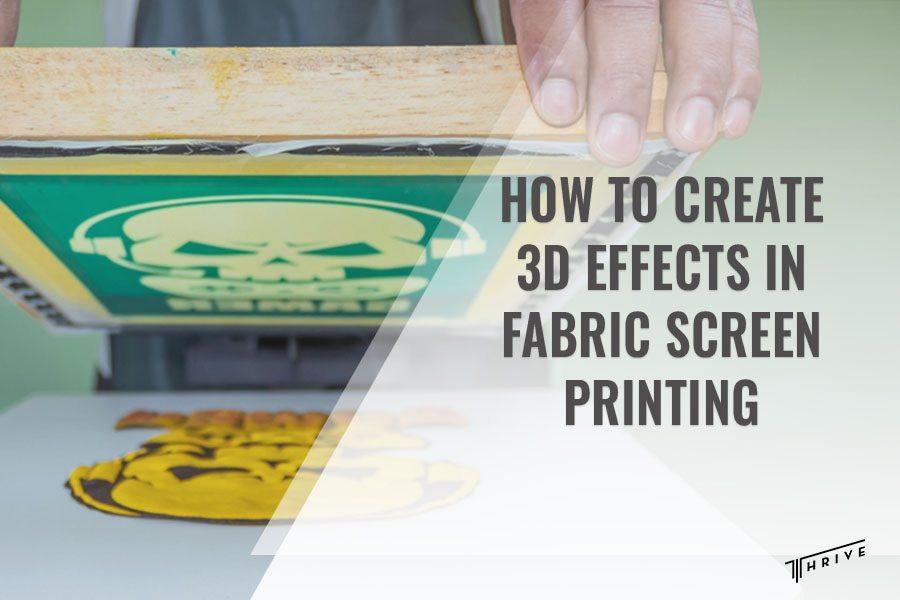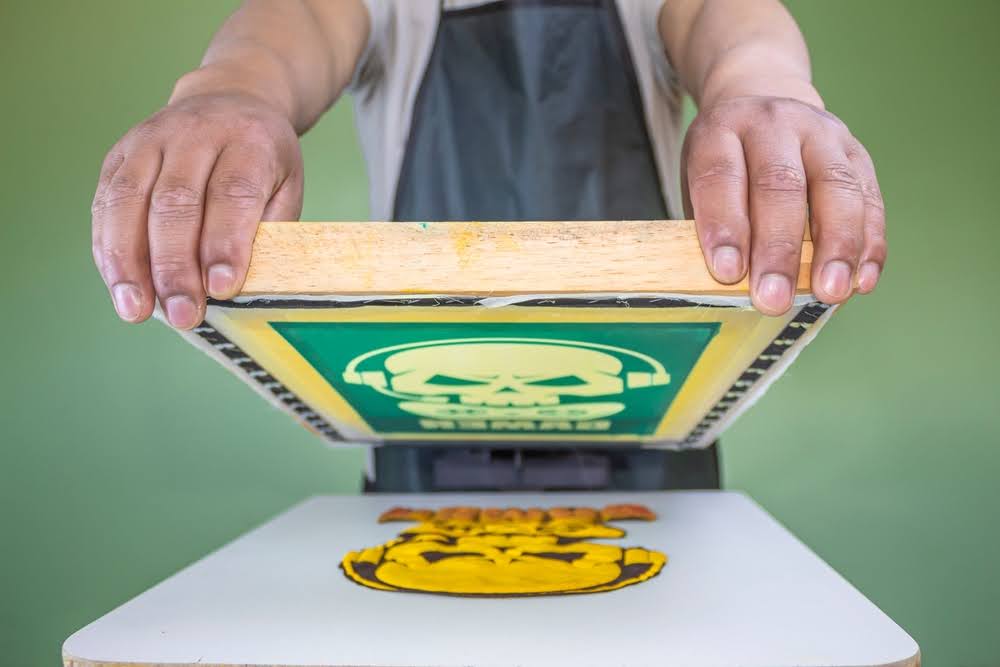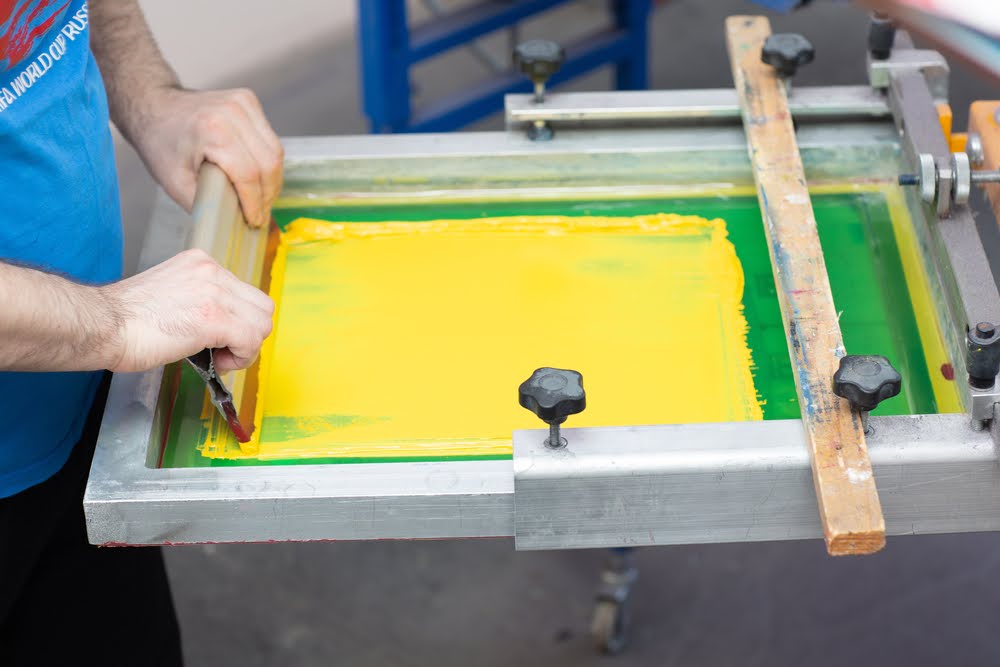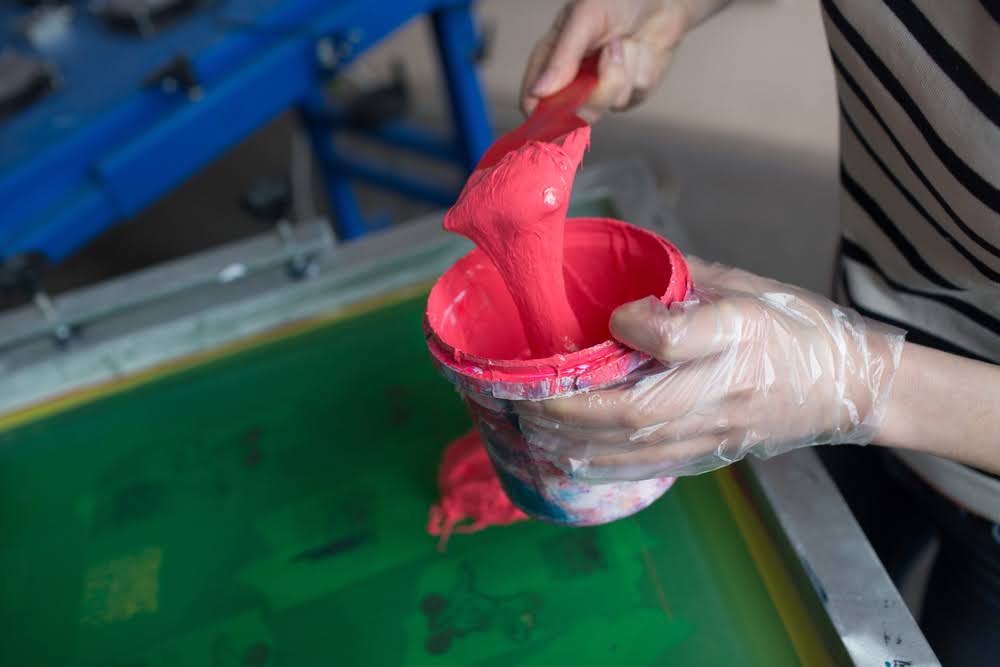
Screen printing is among the most popular apparel printing techniques for various reasons. This includes the durability of the print, vibrant colors, and, most importantly, the ability to produce realistic three-dimensional effects. If you want to learn how to create 3D effects in fabric screen printing, you are in the right place.
As experts in the industry, we are here to introduce you to the most common printing techniques we utilize to transform your 3D design ideas into realistic products you can sell. Let’s start!
How to Create 3D Effects in Fabric Screen Printing
Screen printing is one of the most diverse techniques, making it possible to achieve vibrant and realistic prints. One of the most sophisticated and contemporary designs is 3D effects. Due to their eye-catching appearance and the durability of screen-printed apparel, they are one of our highly demanded printing services.
The steps for screen printing 3D effects generally depend on the printing techniques. Yet, for all of them, we have to go through the following phases to create the 3D design:
- Preparation of the design: Typically, our clients come to us with a specific design. To create yours you can hire a professional designer or create clean and sharp designs by using different applications and programs such as Adobe Illustrator and Corel Draw. Our job during this process is to ensure the design meets all the requirements for the screen printing technique we will use.
- Choosing a screen printing technique: Different techniques can achieve 3D effects. As screen printing experts, it is our responsibility to explain the advantages and disadvantages of each one and suggest which one will work best according to your design.
- Preparing the ink and screen for printing: Depending on the chosen screen printing technique, we continue by selecting the right type of ink and mesh count screen.
- Printing process: The ink is pressed through the screen and cured before the next layer of ink is added.

Screen printing techniques
What techniques can be used to achieve 3D effects in fabric screen printing? As a company that offers high-quality wholesale screen print shirts, we use different techniques to achieve 3D effects on our apparel:
- High-density printing
- Puff screen printing
- Foil printing
- Gel printing
High-density printing
High-density screen printing is a technique we use specifically for creating 3D effects. The secret to high-density printing is applying multiple layers of thick ink to achieve a three-dimensional appearance on the printed surface.
Puff screen printing
Puff screen printing is another way how to create 3D effects in fabric screen printing. The difference between puff and high-density printing is the appearance of the final print.
When utilizing the high-density screen printing technique, the prints will have a glossy or matte finish, raised appearance and rich texture. On the other hand, with puff screen printing, the print is soft, puffy, and embossed.
Foil screen printing
Foiling is another method for creating impeccable 3D prints on different clothing pieces. Although the 3D look can be achieved only by applying metallic foil to the fabric, this screen printing method is typically combined with a puff base.
Gel screen printing
Gel screen printing is another technique that works well for 3D designs. It involves applying a high-density gel layer to the fabric. Gel screen printing offers various advantages, such as precision and excellent color accuracy. Moreover, designs printed with this technique are crumble and abrasion-resistant.

Importance of Ink For Screen Printing 3D Effects
The process of how to achieve a 3D effect in fabric screen printing is like any other design on a T-shirt or other apparel. The ink is pushed through a specially modified mesh screen onto the surface.
High-density ink
The high-density ink is thick and dense, with strong pigments to create a 3D effect. Unlike other inks, which typically blend with the fabric and have a smooth finish, the high-density ink rises from the fabric.
To achieve the three-dimensional effect, we need to use high-density ink and apply multiple layers. As a rule of thumb, we can stack up layers of ink up to 1/8 inch.
One of the most important considerations about high-quality screen-printed 3D prints is letting the layers cure out completely before applying the next one. As a result, high-density screen printing of 3D effects can take some time.
All the layers shouldn’t necessarily be from high-density inks. Sometimes, when we want to achieve a unique raised texture and finish, we can initially apply traditional ink and continue with high-density inks.
Puff ink
If you choose to have a puff design, the steps on how to create 3D effects in screen printing are slightly different. Puff screen prints are done by adding puff additives to the regular ink. The puff additive ink is later applied to the piece of clothing with the help of a 60-110 mesh count screen.
Once applied, the piece is left to dry at a stable temperature. In puff screen printing, the duration of the curing process is crucial because if we leave it for too long, it might damage the print.
What You Should Know Before Ordering 3D Screen Prints
If you want to screen print a design with 3D effects, you should consider a few factors. First, because of the high-density ink composition, we always prefer to screen print 3D designs on cotton apparel.
3D designs are the most durable and detailed on cotton fabrics because the material’s softness and breathability allow good ink penetration. Polyester, blended fabrics, and nylon are other materials suitable for 3D printing effects.
However, one of the biggest limitations of screen printing 3D effects is that the design shouldn’t contain lines with a width lower than 2 points. When creating your design, you should pay extra attention to the lines because the lines might smudge.
In other words, screen printing 3D effects are not possible for detailed designs and halftone images. Whether we use the high-density screen printing technique or add a puff additive to traditional ink, 3D effects work best with simple designs without thin lines.

Conclusion
Understanding all the possible ways how to create 3D effects in fabric screen printing will help your business make an informed decision. All commonly used screen printing techniques for 3D effects, like high-density, puff, foil and gel printing, have distinctive advantages. If you are interested in printing 3D designs on apparel, our Thrive Screen Printing team can’t wait to hear from you and answer your questions!

Robert Fisher is the founder and CEO of Thrive Screen Printing and brings extensive experience in the screen printing and fulfillment industry.

